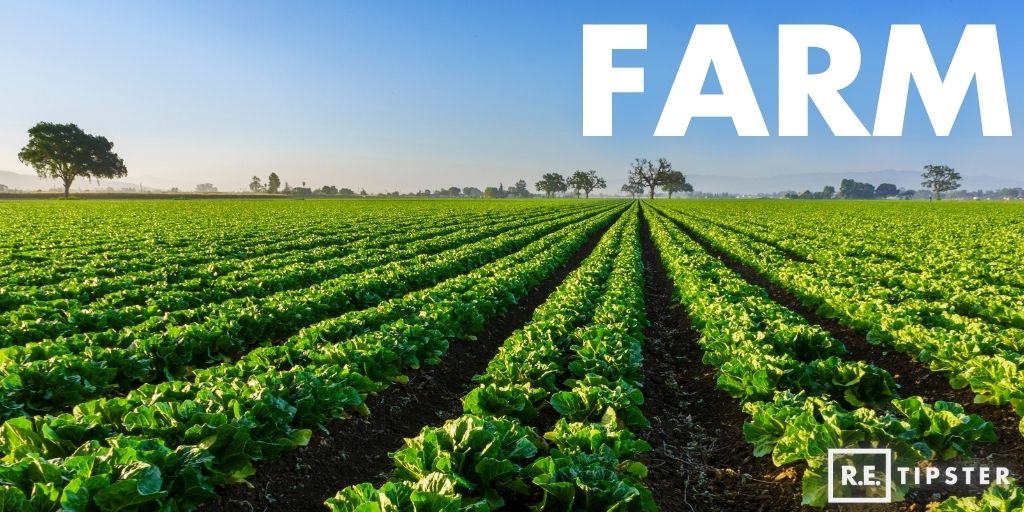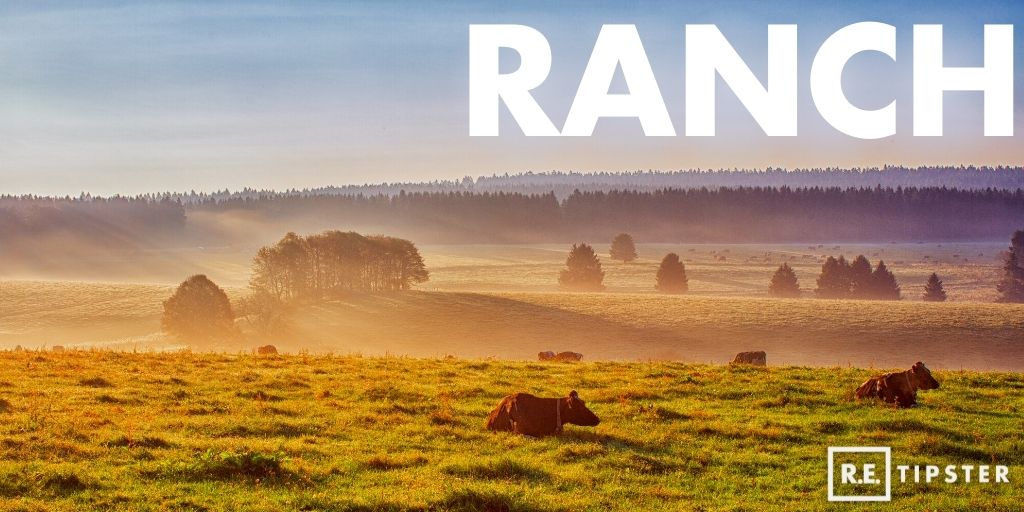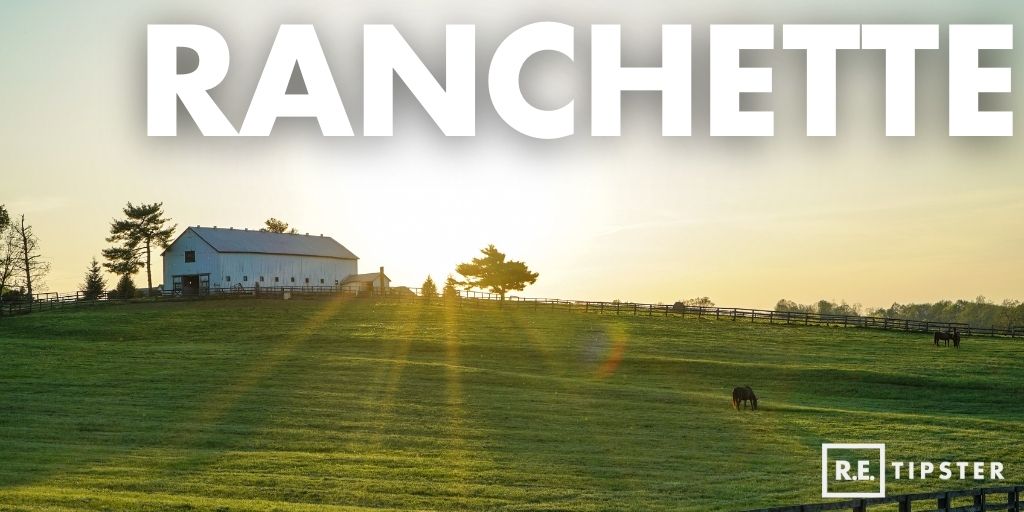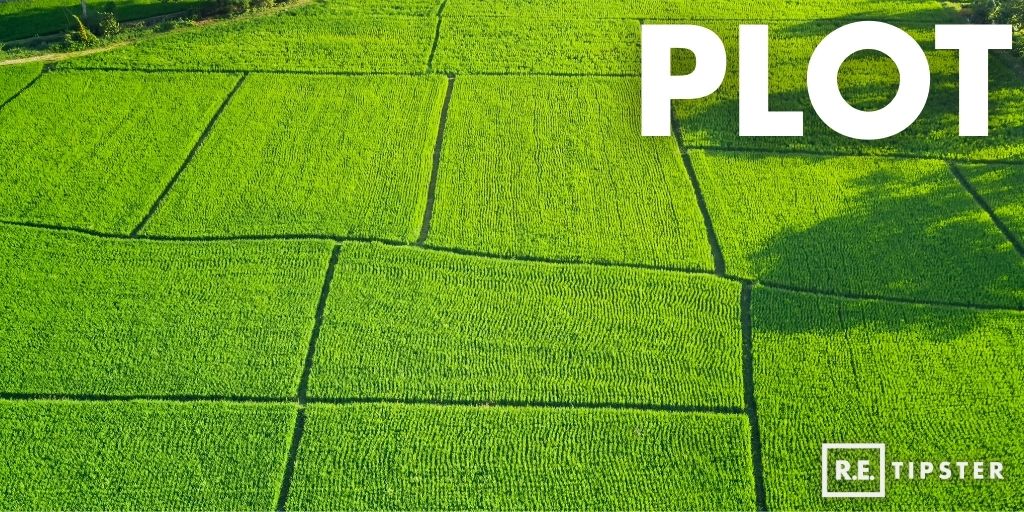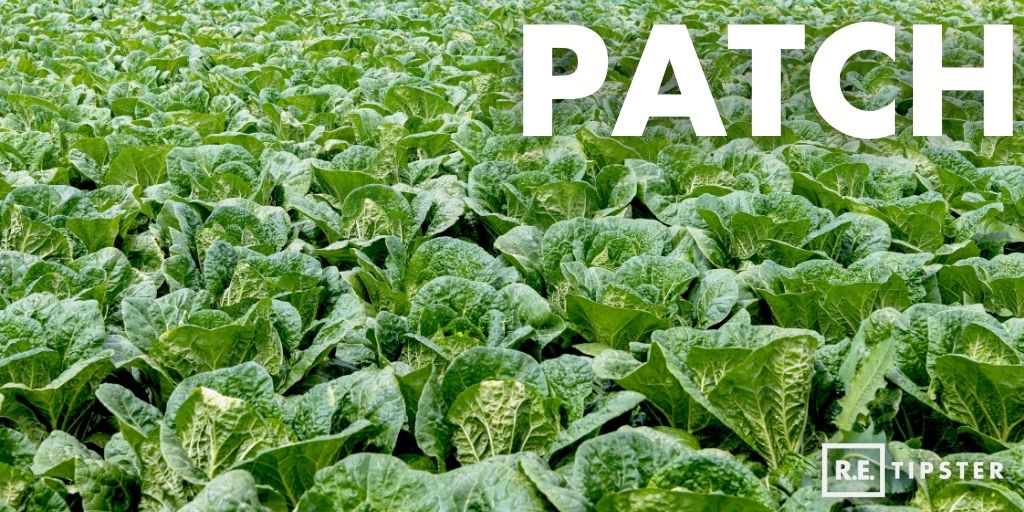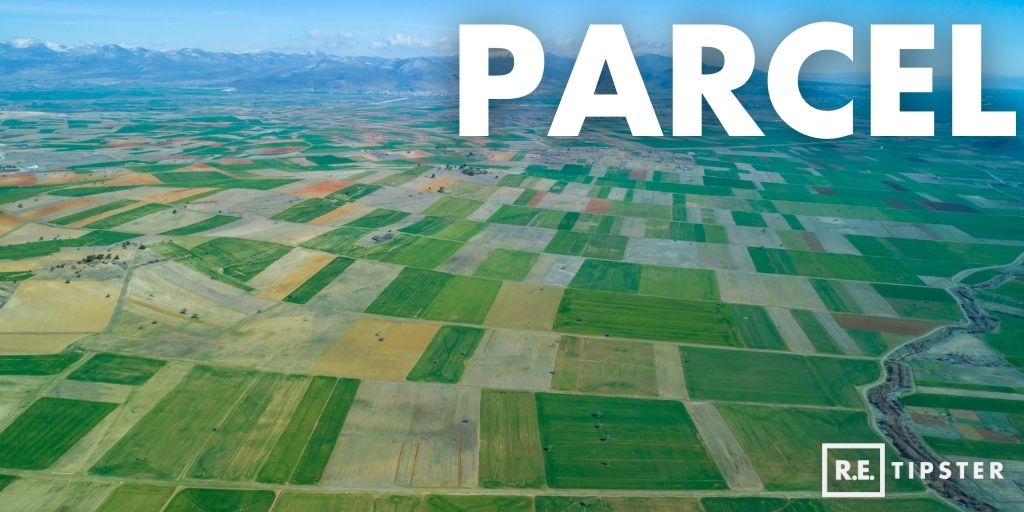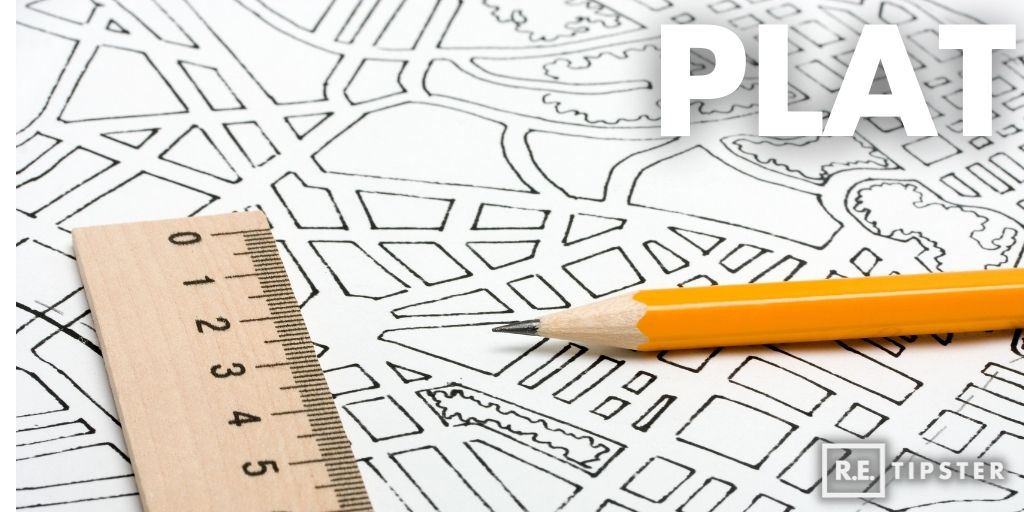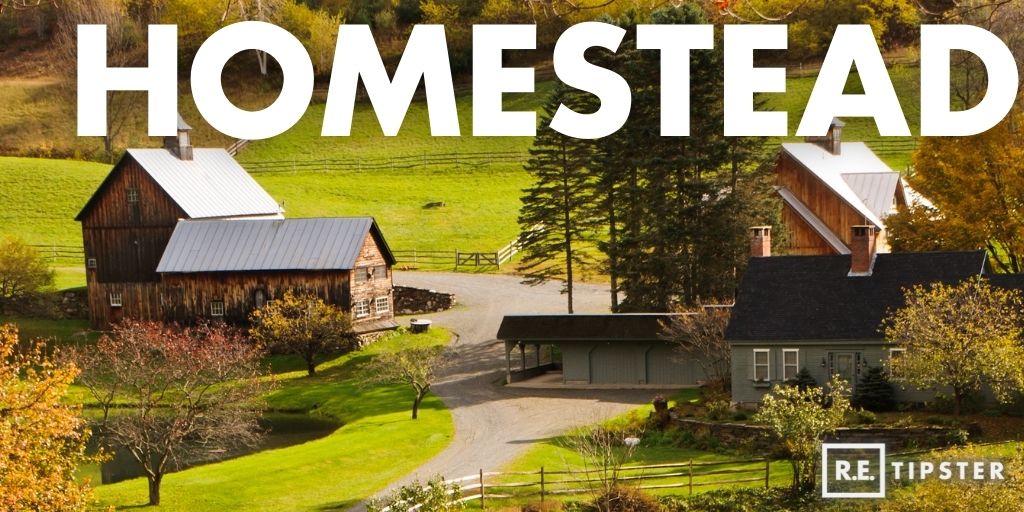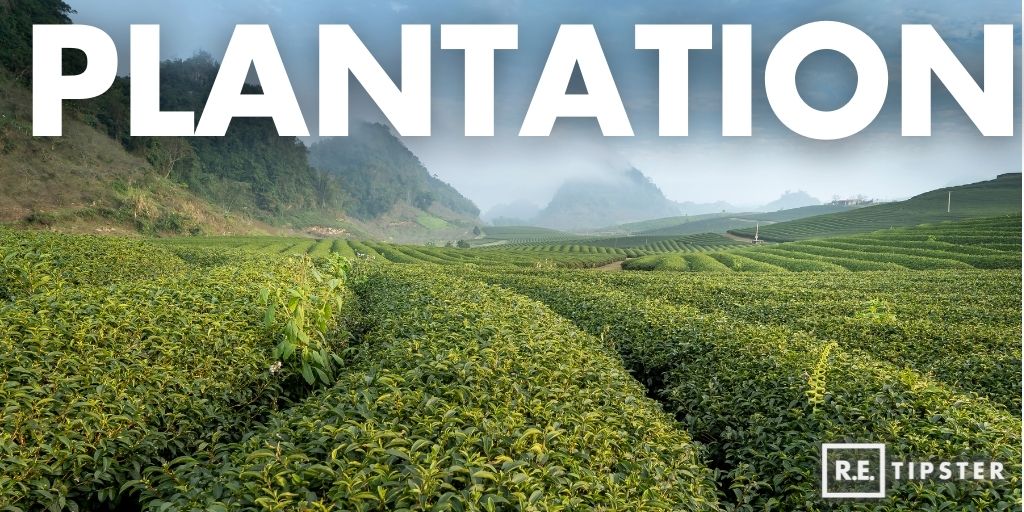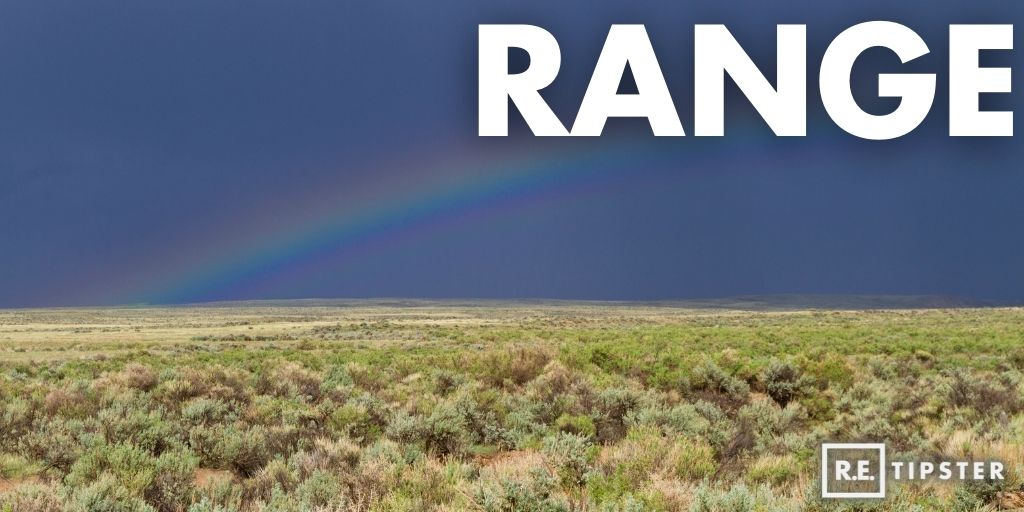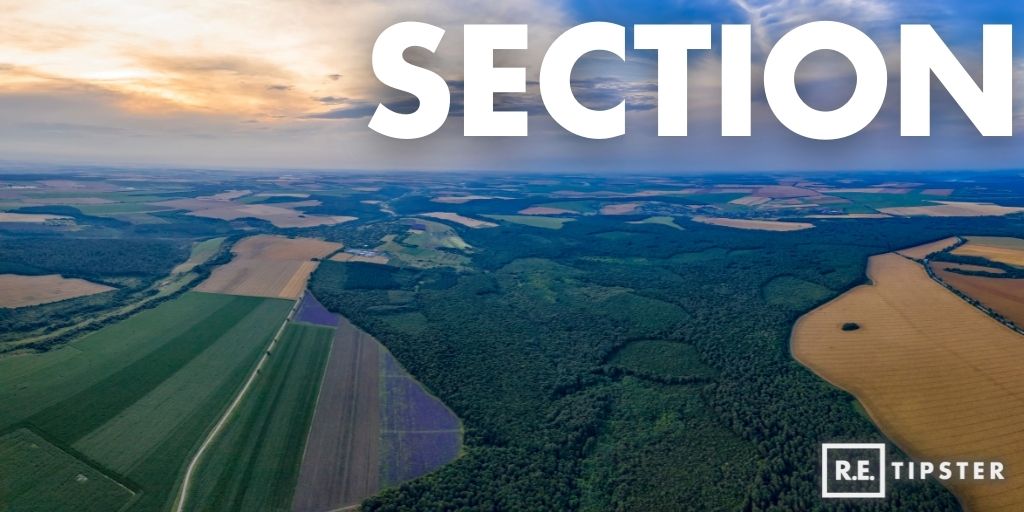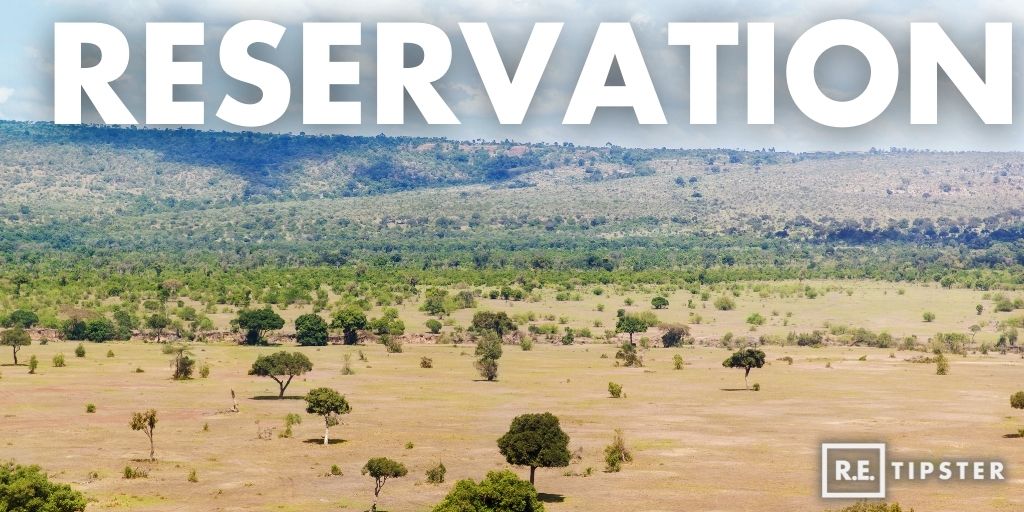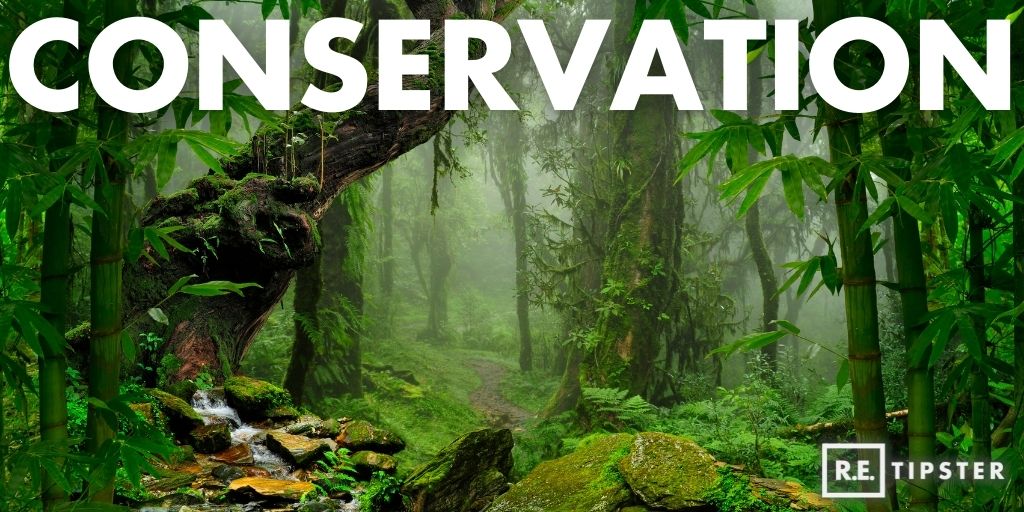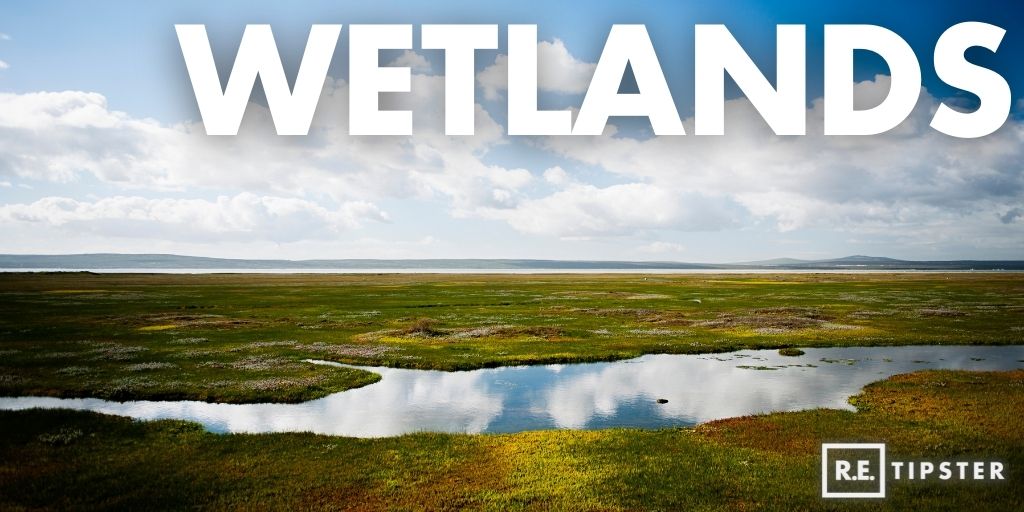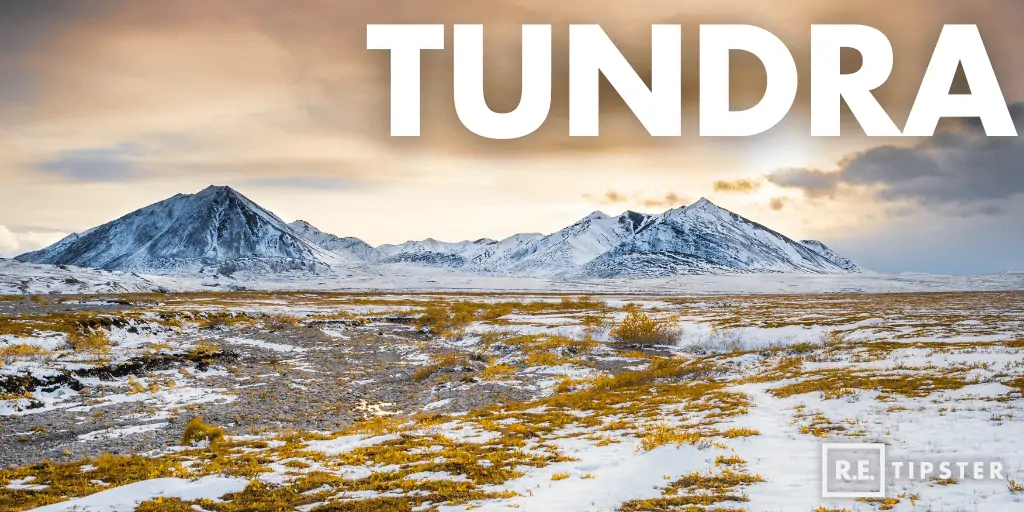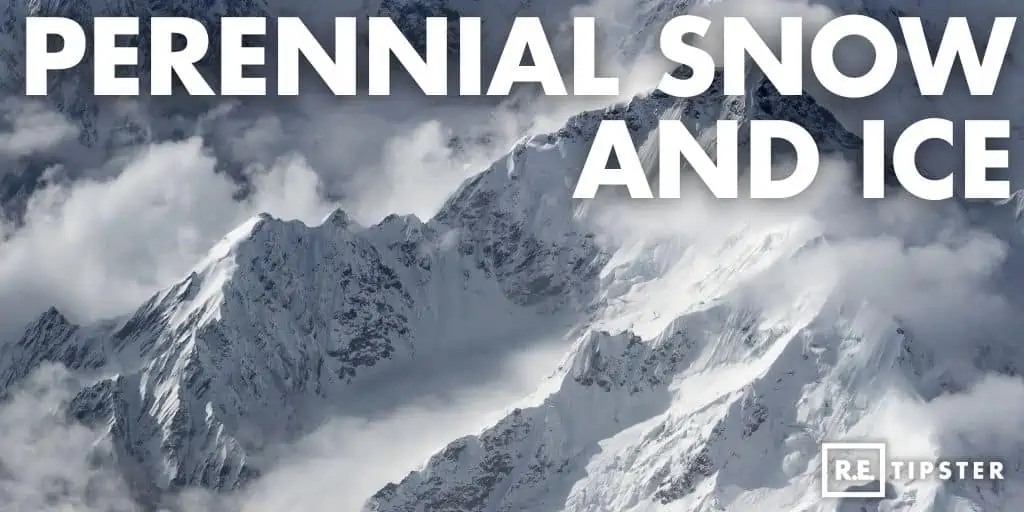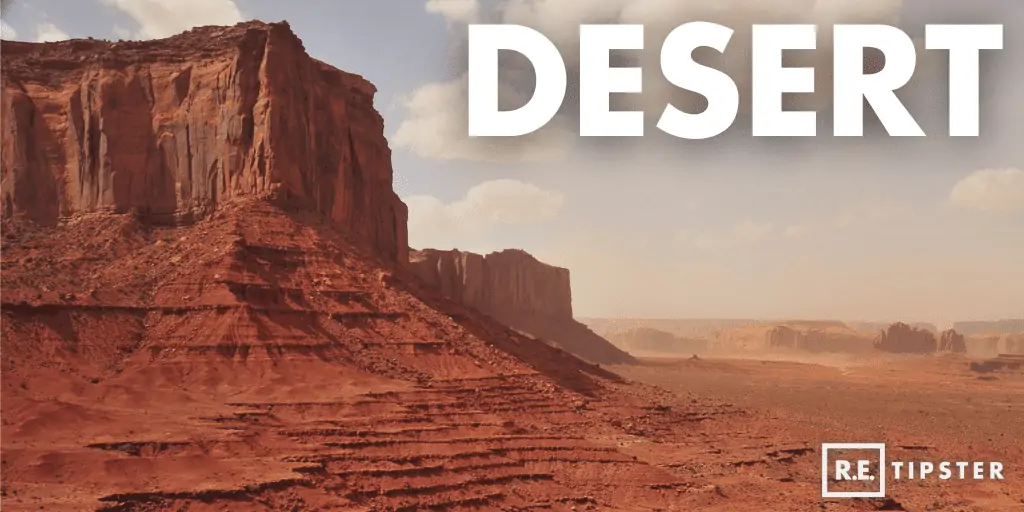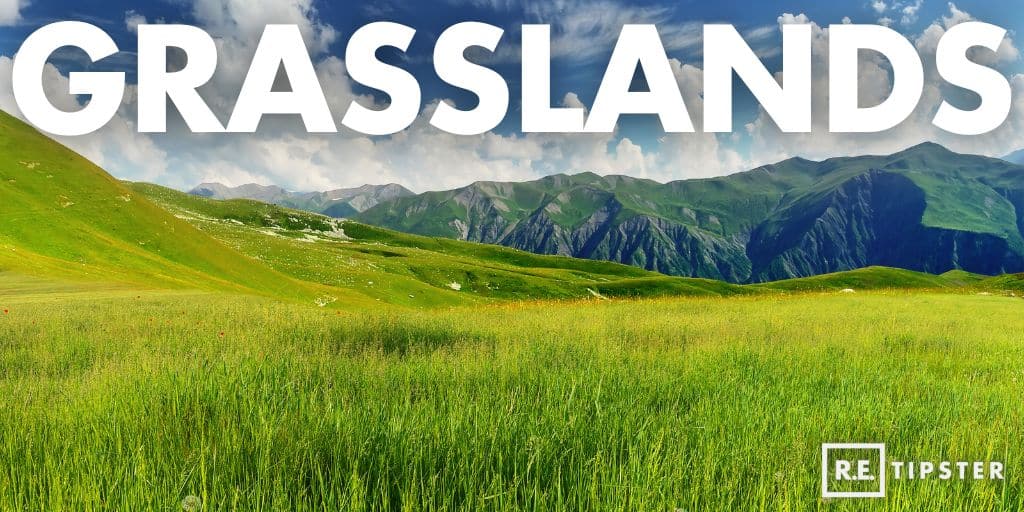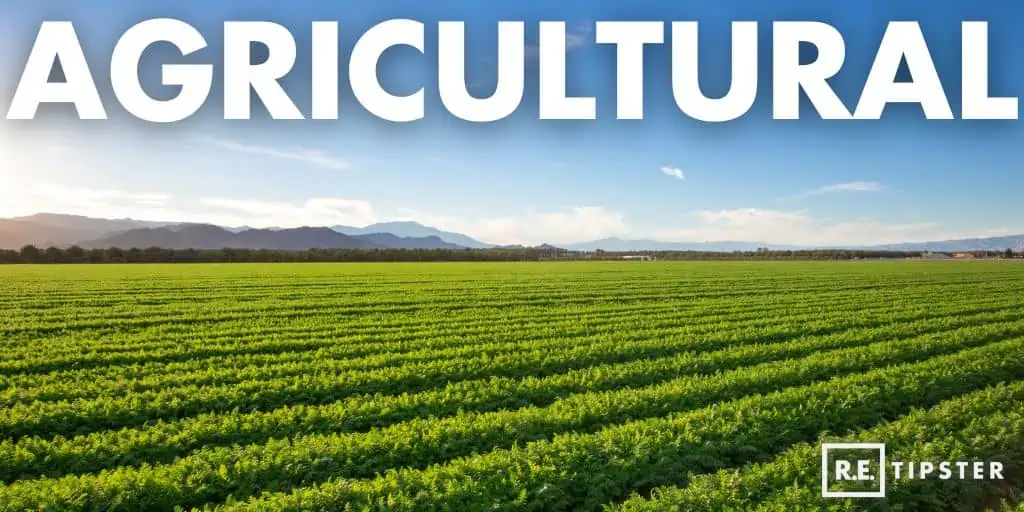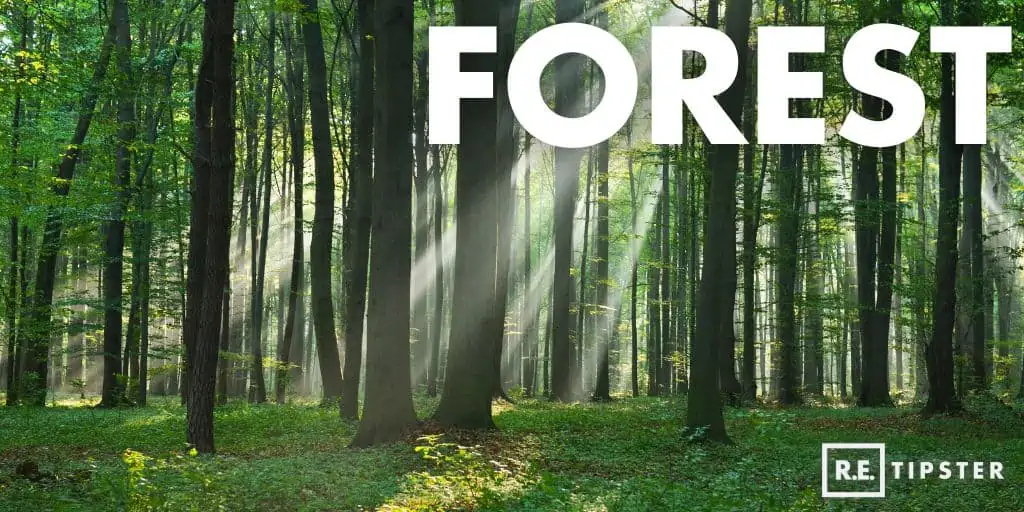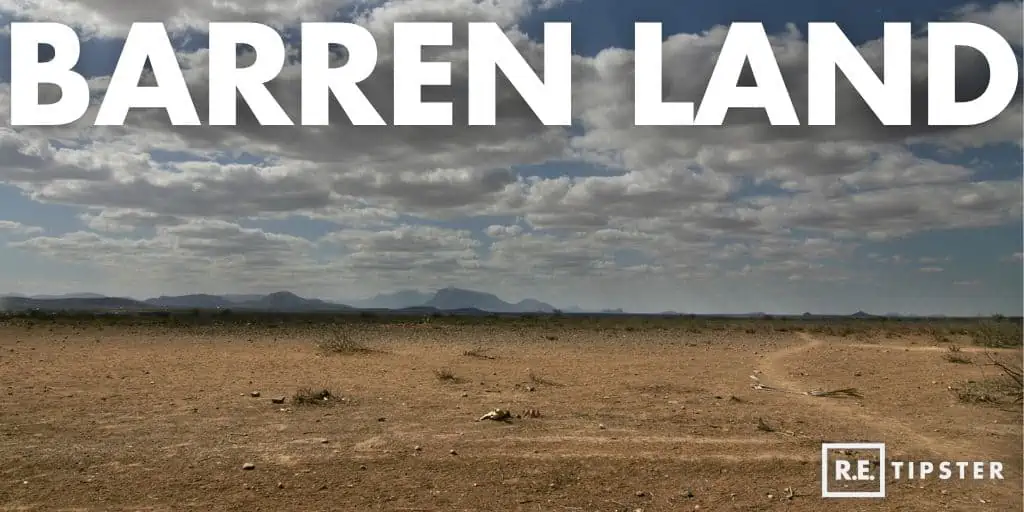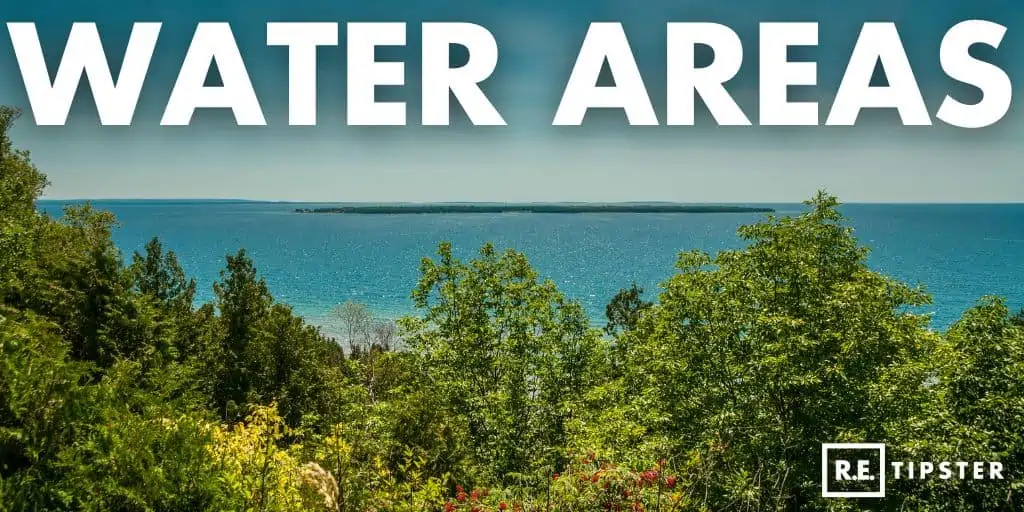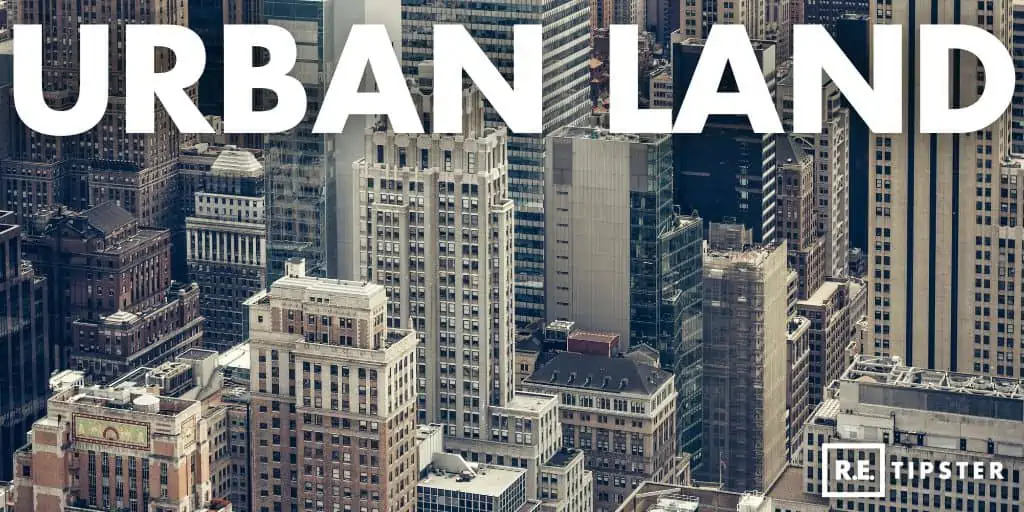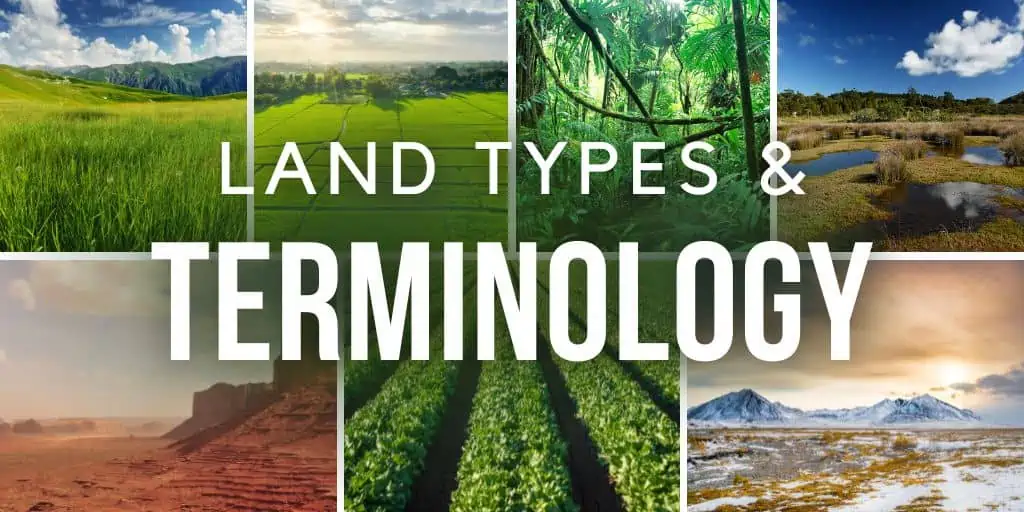
The real estate business is full of unique words and technical terminology.
Sometimes these terms are confused or used interchangeably, but it's important to understand what is being discussed when you hear real estate jargon thrown around.
In the world of vacant land, many different terms are used to distinguish one type of property from another. Even local government legislation and definitions can play a huge role in setting one type of land apart from another.
Let's cover some of the most common land types and terminology, what each one means, their unique characteristics, and more.
1. Tract
The term “tract” is used in reference to many different shapes and sizes of land. It is not used to define a specific size, but it does imply that the size has been determined with its boundaries clearly established, usually by a formal land survey.
A tract can refer to a single lot or an area with multiple lots within it. A tract is typically a larger area that has been measured and its borders defined.
One common example of a tract is 640 acres of land, also referred to as a “section.” However, a tract of land doesn't exclusively refer to a 640-acre section. A tract may just as well be a five-acre portion of land.
2. Farm
A farm is one or more parcels of land dedicated to the business of agriculture, livestock, or both. It can be a single parcel or several adjoining parcels (nearby one another). Farms may also have houses and other buildings, as people often live within their farms.
The USDA defines a farm as:
“Any place that produced and sold—or normally would have produced and sold—at least $1,000 of agricultural products during a given year.” (source)
Given this definition, a “farm” is an umbrella term that covers various agricultural uses, including ranches, orchards, groves, vineyards, and more, which we'll discuss below. A farm can be any plot of land used to produce a crop or animal harvest.
3. Ranch
A “ranch” is an area used to raise cattle, sheep, pigs, and other livestock. Sometimes referred to as a “pasture,” ranches are often used for grazing, typically by ranchers. The underlying purpose of a ranch is to produce livestock for the eventual sale of meat and other non-vegetarian items in the market.
How many acres is considered a ranch? No standard size requirement for a parcel of land to be considered a ranch exists. Per the USDA definition, a ranch property could be any parcel large enough to support and sustain livestock. In some areas, a ranch could be over 1,000 acres; in others, a ranch could be as small as 40 acres.
What's the difference between a ranch and a farm? A ranch is essentially a farm that is dedicated to the raising of livestock, whereas a farm is dedicated to the growing of crops. Another way to look at it is that every ranch is a type of farm, but not every farm is considered a ranch.
4. Ranchette
A ranchette is a smaller version of a ranch with many of the same features and characteristics.
What's the difference between a ranch and a ranchette? Most ranchettes will range between 5 to 10 acres, whereas the typical ranch is significantly larger (40 to 4,000 acres and beyond).
Ranchettes are often created when a larger farm or ranch is subdivided into smaller parcels. Ranchettes often contain a house, garden, barn, and a smaller dedicated space for raising livestock or animals such as chickens, goats, cattle, or other specialty animals like alpacas or ostriches. This type of property appeals to many buyers because it offers a unique hybrid between a farm, ranch, and residential living.
5. Plot
Plots represent pieces of land that are smaller than other types of land.
A plot is typically delineated and marked to use for a specific goal in the future. Some common examples would be a “bean plot,” “cabbage patch,” or “briar patch.”
6. Patch
Similar to a plot, a “patch” is often used in reference to a small area used to grow a specific plant or crop.
Some common examples would be a “cabbage patch” or a “briar patch.”
7. Parcel
A parcel is a piece or unit of land that was created due to dividing a larger area.
The word “parcel” can be used to describe any other words on this list, including tract, ranch, farm, plot, and so on.
Parcel sizes can vary greatly, which means a parcel is only “small” or “large” respective to its parent parcel or the parcel it sits next to.
Parcels are also used as a way to identify every unique piece of real estate within a jurisdiction of a county, city, township, parish, or borough. Each property is assigned a parcel number, which can be used by the local governing body to keep track of each property's owner, the property taxes they owe each year, and more.
8. Plat
The word “plat” does not refer to actual land but to the map representing it.
Plats are also plans or charts that include information, features, and infrastructure.
9. Block
A block means what you think it does: a group of buildings with streets along the sides.
Blocks aren't necessarily used to describe vacant land, although they can be if the entire city block is vacant (…I'm looking at you, Detroit).
Blocks are more common in towns or cities and are typically shaped like a square or rectangle.
10. Park
Parks are places where public land is kept with minimal construction to preserve nature and green space.
A park has the purpose of being enjoyed by people, using nature as a tool for relaxation.
City, town, county, and state parks are typically funded by tax revenue and maintained by a government agency.
11. Homestead
A homestead is a house people live in. They are found on farms, ranches, and other land types. They’re inhabited not just by people who own or work the land but also their families.
The word “homesteading” is often used in a lifestyle of self-sufficiency, where people find rural vacant land and use it to grow their crops through subsistence agriculture. When people find a parcel suitable for this lifestyle, they refer to the property as their homestead.
12. Plantation
Plantations are huge farms specifically purposed for the cultivation of a specific type of crop. Usually found in tropical weather, it’s frequently worked on by a resident labor force.
Common types of plantations are used to grow sugar cane, oil palms, rubber trees, bananas, and other produce and consumables.
13. Range
The word “range” has more than one meaning.
One use is in property legal descriptions as a way to identify the location of a property within a township, section, and range.
Another use is in the word “rangeland,” which is defined by USDA as:
“lands on which the indigenous vegetation is predominately grasses, grass-like plants, forbs, and possibly shrubs or dispersed trees.”
Generally speaking, a range is open land that has rich and healthy grass growing on it for animals to feed is a range. On a range, animals can both graze and roam freely, so it plays a very important role in the agricultural system.
14. Section
Under U.S. land surveying protocols, a section is defined as one square mile of land, which is the equivalent of 640 acres.
Sections are also 1 of 36 divided parts of a township, which belongs to a county. Similar to a “range,” sections are used in property legal descriptions to identify a property's location within a township, section, and range.
15. Reservation
A reservation or reserve is an area established to protect something. This can be wildlife, culture, history, or certain groups of indigenous people.
In the United States, the term “reservation” comes from when European settlers interacted with Native Americans.
As explained by History.com,
The Indian reservation system established tracts of land called reservations for Native Americans to live on as white settlers took over their land. The main goals of Indian reservations were to bring Native Americans under U.S. government control, minimize conflict between Indians and settlers and encourage Native Americans to take on the ways of the white man. But many Native Americans were forced onto reservations with catastrophic results and devastating, long-lasting effects.
Reservations are not unique to America. They have been established on other continents for similar purposes, including Australia.
In the U.S. alone, there are 56,200,000 acres dedicated to various reservations around the country.
16. Conservation
A conservation is an area of land under state or federal protection.
These parcels of land are protected because they have certain ecological, natural, or cultural value. There are well over 161,000 protected areas around the globe, and more are being added daily (source).
17. Preservation
Preservation is also an area of land under state or federal protection.
Conservation vs. Preservation: What's the Difference?
According to NPR:
Conservation and preservation are closely linked and may indeed seem to mean the same thing. Both terms involve a degree of protection, but how that is protection is carried out is the key difference. Conservation is generally associated with the protection of natural resources, while preservation is associated with the protection of buildings, objects, and landscapes. Put simply conservation seeks the proper use of nature, while preservation seeks protection of nature from use.
Some examples of these protected areas are:
- National parks (preservation and conservation)
- Wilderness reserves (conservation)
- National monuments (preservation)
- Historical buildings (preservation)
- Strict nature reserves (conservation)
- Habitat area (conservation)
- Protected landscape (conservation)
In an era of widespread urbanization, these protected areas have provided ecosystems with a safe refuge, assisted in maintaining the health of the local biodiversity, and allowed all of us to enjoy the privilege of having the natural world as a part of our lives.
18. Wetlands
Wetland areas comprise many different types of land largely used as a habitat for protected species of wildlife and vegetation.
Wetland types can be broken down into four main categories:
- Marshes
- Swamps
- Bogs
- Fens
Most wetland areas are not developable without express permission from the local governing body because the destruction of wetland areas can seriously affect the health of the surrounding natural ecosystem.
RELATED: How to Identify (and Avoid) Wetlands
19. Tundra
The coldest of all biomes, the tundra experiences low temperatures, little precipitation, few plants, poor nutrients, and often frost, ice, and snow. Summers are short in the tundra and usually fail to thaw the ground completely, leaving a layer of permafrost under the land's surface.
In most cases, land in the tundra comes with little commercial value unless it contains minerals or natural resources such as oil.
Tundra land comes in two varieties: arctic and alpine. Arctic tundra exists near the poles, while alpine tundra lies above the tree line in mountain ranges, although this latter is sometimes called perennial snow and ice.
20. Perennial Snow and Ice
These mountainous landscapes are tundra biomes, although caused by altitude rather than latitude.
As the name suggests, the snow never (or rarely) completely melts in these zones. Even at the height of summer, you can find snow, even if only in drifts or the shade of trees or outcroppings.
21. Desert
With less than 20 inches of rainfall annually, deserts cover around 20% of the Earth’s land surface.
Ecologists classify deserts in one of four ways: hot and dry, semiarid, coastal, and cold. Despite their reputation as baking infernos, not all deserts are hot. Cold deserts also exist, where the occasional precipitation often takes the form of snow.
Deserts support minimal plant and animal life, although some species have evolved to live there. They make for poor agricultural areas.
22. Grassland
Grasslands come in two categories: temperate and tropical—both experience more rainfall than deserts but not as much as forests.
People often refer to tropical grasslands as savannas, which lie close to the equator and come with hot temperatures. They cover nearly half of Africa but also exist in parts of South America, India, and Australia.
Meanwhile, temperate grasslands sit further from the equator and can be found in Hungary, South Africa, North America, Russia, Uruguay, and Argentina. They fall into two sub-categories: prairie and steppe. Prairie grasslands feature longer grasses than steppes.
Grasslands can support some types of agriculture that can flourish without heavy rainfall, such as ranching.
23. Agricultural
Humans have transformed agricultural land to produce crops or support farming, including growing grains such as wheat, barley, or fruits or vegetables. Alternatively, it can include grazing land for cattle and horses, or yards for other farmed animals such as pigs, sheep, and chickens.
Sometimes farmers leave agricultural land fallow so the soil can recover, as certain crops damage the soil and leave it less fertile.
Before buying land to use for farming, check the zoning. If it’s not already zoned for agriculture, do some due diligence to investigate the difficulty of rezoning.
24. Forest
Most of the world’s land-based biodiversity exists in forest lands. Forested lands receive plenty of rainfall and can support not just occasional trees but full forests.
Forests come in three types: tropical, temperate, and boreal.
Lying close to the equator, tropical forests maintain relatively warm temperatures all year round and support the greatest biodiversity. Further from the equator lie temperate forests, which experience all four seasons. And at higher latitudes in the northern hemisphere sit boreal forests, which receive less precipitation, largely in the snow rather than rain. While they account for the greatest land area, boreal forests support the least biodiversity.
Unfortunately for forests and the various life found in them, they tend to yield fertile agricultural land. And while trees must be cleared to convert them to agriculture, selling lumber can offset those costs.
Still, many forests lie in public lands, at least in the United States and Canada.
25. Barren Land
Barren lands include bare, exposed rock landscapes, dry salt flats, sand dunes, strip mines, quarries, and gravel pits. They tend to offer little agricultural or development value, although they can come with mineral wealth.
Little plant life grows on barren land, which, in turn, means little animal life.
As a general rule, consider them a red flag for land investors unless you’ve verified mineral deposits on the property.
26. Water Areas
You can classify any land on or near water as a “water area.” That includes oceanfront, lakefront, riverfront, or other types of land near bodies of water or flowing rivers.
Even people who know nothing about real estate understand the value of waterfront or water-view properties. Besides being picturesque, these areas offer recreation such as sailing, fishing, and swimming or economic value as ports or marinas.
Mark Twain once pithily advised, “Buy land; they’re not making it anymore.” That goes doubly for waterfront land, a truly limited commodity. Although I suppose the creators of Dubai’s Palm Islands might disagree.
27. Urban Land
Of all the land types outlined above, you probably know urban lands the best, as human-created landscapes are where most of us live and work.
Urban land in this context doesn’t have to mean only high-density city land. It also includes developed suburban areas, where most of the land has been transformed for human use.
Consider residential, commercial, industrial, and other developed areas as urban land. It’s relatively expensive compared to undeveloped land, with its value measured in what kind of developed use you can put it to.
Other Types
There are many other types of land and associated terminology, but most are subsets of the described above.
For example, other terms like grove, orchard, nursery, and vineyard fall under the “Farm” category above.
Hopefully, this article and the breakdown of land types and terminology are useful to your ongoing education and real estate journey!
Want to Learn More?
I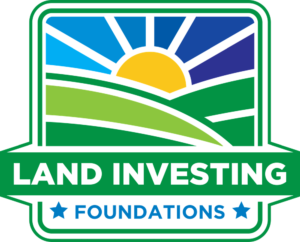
I created this course because I recognized the need for a more elementary approach to understanding the fundamentals of the land business. These things simply must be understood BEFORE a new land investor starts looking for deals.
In this entry-level course, I'll help you understand the different strategies and business models available in the land industry. I'll also teach you how to speak the language of a land investor, and we'll walk through some of the different opportunities the land business offers and a lot more!
This is a step-by-step course with tools and templates to help you learn the land business, evaluate markets, investigate properties, and start building your land business on the right foot.






